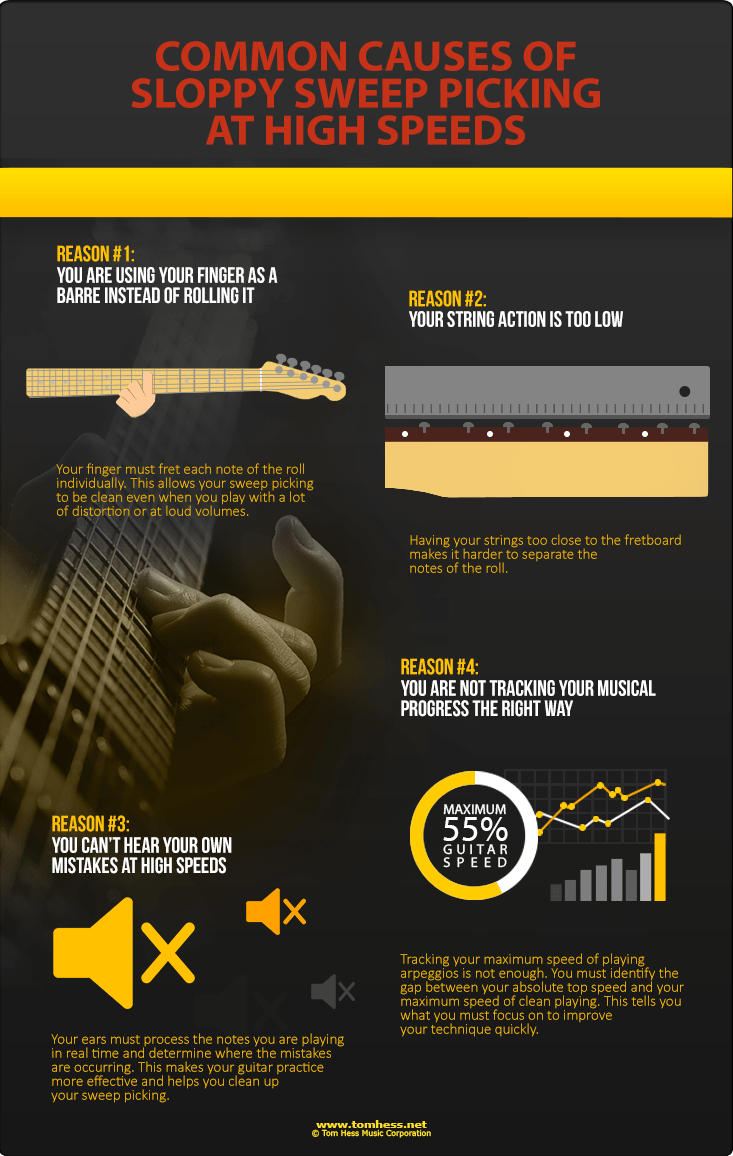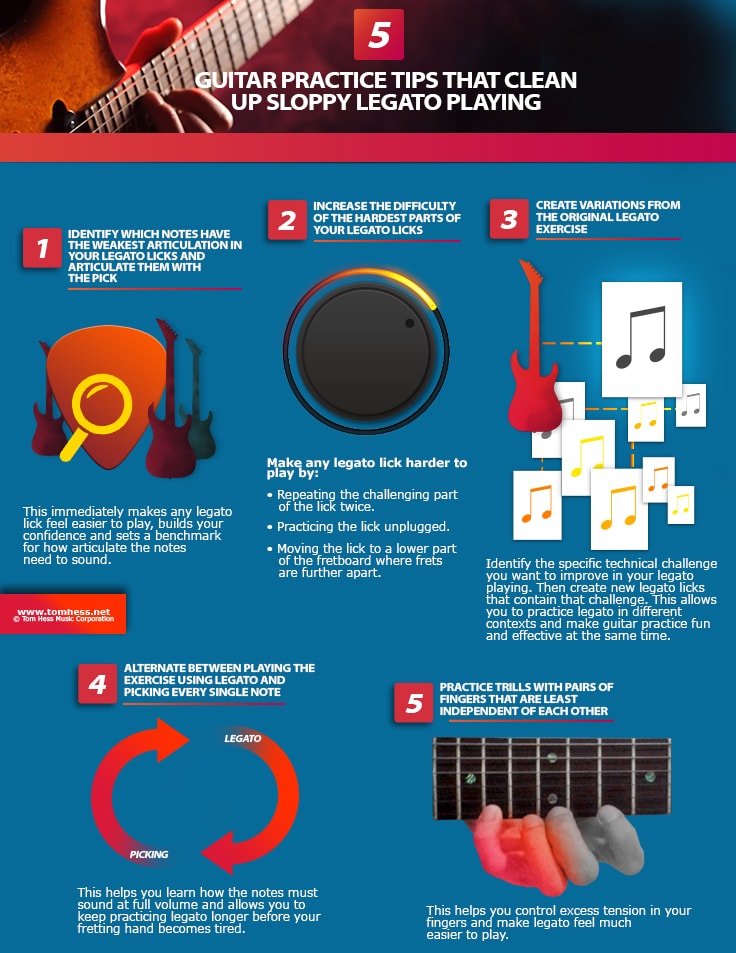Guitar String Thickness Guide - Best Guitar String Gauge
by Tom Hess
Feel Incredibly Easy

EMAIL TO GET ACCESS
By submitting your info, you agree to send it to Tom Hess Music Corporation who will process and use it according to their privacy policy.
Want some help deciding on the best guitar string gauge for your guitar technique needs?
You’ve come to the right place.
However:
My approach to choosing the right guitar string thickness is quite different from most guitar players.
(As you’ll see, I don’t agree with a lot of the conventional wisdom about guitar strings, guitar string thickness and guitar string gauge selection.)
I’ll help you decide on the proper guitar string gauge depending on:
- What guitar you play
- Your specific preferences relating to guitar tone and guitar technique
- And your specific guitar speed challenges
Feel Incredibly Easy

EMAIL TO GET ACCESS
By submitting your info, you agree to send it to Tom Hess Music Corporation who will process and use it according to their privacy policy.
First, watch this video on how to decide on the ideal guitar string gauge for you:
Now that you know how to choose the right guitar string gauge for your guitar, let’s go deeper.
Here are 5 guitar technique (and guitar speed) elements to consider as you make your final decision about what guitar string thickness to go with:
Believe it or not, it’s really easy to get virtually infinite sustain on your guitar (no matter what guitar strings or guitar string gauge you use).
You don’t have to worry about losing out on sustain when you switch to lighter guitar strings. (Nor should you expect to get a boost in sustain by using a thicker string gauge.)
And best part is…
… you can improve your sustain without spending thousands of dollars on fancy equipment (like: a sustainer, active pick ups, pedals, new amps or changing your guitar string thickness).
That said, you do need one very specific piece of guitar gear (which has nothing to do with your guitar strings or guitar string thickness).
That piece of equipment is:
A stiff guitar pick.
Why a stiff guitar pick?
Answer: A stiff guitar pick doesn't flex when you hit your guitar strings. This means you can project more power to the guitar strings (making your sustain better – no matter if you use thin guitar strings or thick guitar strings).
Want to see how a stiff guitar pick helps your sustain (no matter what guitar string gauge or guitar string thickness you use)?
Watch this video:
Question: “Tom Hess, I read somewhere that Paul Gilbert uses a thin guitar pick for playing. Does that mean thin guitar picks are better for developing guitar technique and building guitar speed?”
Answer: No. A thin guitar pick gets in the way of building your guitar speed for the same reason it affects your sustain.
And when it comes to guitar speed, a thin guitar pick affects it even more than the guitar strings and guitar string gauge you use do.
Here is why:
A thin guitar pick bends when you pick a note. (And the more articulation you use when you pick your guitar strings – the more the pick flexes.) This makes it hard to keep your hands in sync as you are playing your guitar strings and trying to achieve more guitar speed.
And as far as Paul Gilbert’s guitar technique and guitar speed?
Just because someone has built a lot of guitar speed using some guitar technique (or guitar pick) doesn't mean they built their guitar speed because of that one thing.
They often have a lot of guitar speed in spite of it.
On another note, you can potentially increase your guitar speed by using a flexible pick if you are using very light guitar strings. (And are ok with the potential downsides of using a lighter guitar string gauge.)
One of the (potential) downsides of switching to a lighter guitar string gauge is a greater challenge when doing finger rolling.
(In case you don’t know this guitar technique: finger rolling happens when you fret several notes on different strings on the same fret, with the same finger.)
And yes, finger rolling is impacted negatively by guitar string gauge… but not for the reason you think.
(Hint: It has nothing to do with your guitar speed.)
It’s quite easy to build incredible guitar speed with finger rolling guitar technique, no matter if you use a lighter guitar string gauge or a heavier guitar string gauge.
That is, as long as you understand the mechanics of this guitar technique.
What are the mechanics of finger rolling? Watch this video to find out:
So - if it’s not guitar speed - what is the downside to using a lighter guitar string gauge to play this guitar technique?
Simple:
Doing finger rolling with lighter guitar strings makes it harder to do finger rolling cleanly.
When you use lighter guitar strings, the front-end of the note becomes cleaner. (In plain English: it is easier to push the guitar strings down when the guitar string thickness is lighter.)
However, when guitar string thickness is lighter, the back-end of the note suffers. (In plain English – it takes a lot more control in your guitar technique to release the note cleanly when your guitar string thickness is low.)
Add to that the fact that finger rolling demands a lot of control specifically on the back half of the note (this is true no matter your guitar string thickness you prefer).
That is why thinner guitar strings make it harder to do finger rolling guitar technique well.
Question: “Tom Hess, why do you say that it’s possible to build a lot of guitar speed with finger rolling, no matter what guitar string thickness I use?”
Answer: Because this guitar technique is efficient to the max. Meaning: it takes very little overall movement from both hands to do finger rolling (no matter if you use a heavy guitar string thickness or a light guitar string thickness).
This is why it’s generally easy to build a lot of guitar speed with finger rolling.
That said, here is a trick to making your finger rolling guitar technique clean even with lighter guitar string thickness:
Raise the action of your guitar strings (the height of your guitar strings from the guitar neck).
This compensates in a big way for the loss of control you feel on the release of the note with a lighter guitar string thickness. Why? Because the higher the action of your guitar strings – the more tension there is on the strings.

Do guitar string gauge and guitar string thickness affect your ability to control string noise in your guitar technique?
Other than greater control needs for the release of a note (that comes from using a lower guitar string thickness), the answer is no.
Here is why:
Muting unwanted noise from your guitar strings has nothing to do with fretting notes, sustaining notes or the tone of the notes. (That’s why your guitar string thickness doesn't matter for this part of your guitar technique.)
Your guitar technique doesn't change.
All you do is cover the guitar strings you are NOT playing to keep them from making noise.
You can use the same noise-killing guitar technique you’ve always used, no matter what guitar string gauge you prefer.
This is also why you can continue to build guitar speed even when switching between different guitar string gauge types.
Here are the main ways I’ve always muted string noise (no matter what guitar string thickness I’ve used on my guitar):
1. Thumb Muting.
As the name implies, you rest your picking hand’s thumb on the lower (in pitch) guitar strings. Then, you simply slide the thumb up and down as you change strings.
This guitar technique motion stays exactly the same, no matter your guitar string gauge (i.e. you can do thumb muting equally well, no matter if you use high or low guitar string thickness).
Tip: use thumb muting to mute excess noise from your guitar strings – not palm muting. Why is palm muting an inferior guitar technique?
Palm muting forces your pick to be outside the string trench (the space between guitar strings) when it’s in between notes. Which means: your guitar technique becomes less efficient and building guitar speed becomes harder.
All the more reason to use thumb muting as your guitar technique of choice for muting excess noise from your guitar strings (no matter what guitar string gauge or guitar string thickness you use).
2. Fretting Hand Index Finger Muting.
Rest your fretting hand’s index finger on the higher (in pitch) guitar strings as you play your guitar licks. This is equally easy to do no matter what guitar string gauge (or guitar string thickness) you prefer.
3. Picking hand muting with the fingers not holding the guitar pick.
Simply touch the higher (in pitch) guitar strings with your ring finger and/or the pinkie finger of the picking hand.
With these 3 types of string muting guitar technique, your playing stays clean and your guitar speed always sounds good (no matter what guitar string gauge you go with).
Think bending guitar strings is easy?
Ha! Not so fast.
Let me ask you:
Ever put 2.5-step guitar string bends into your guitar licks and solos?
Ever played a sliding chain of guitar string bends?
What about half-ghosted guitar string bends?
Ok, I came up with these names, so I don't expect you to know them.
But these variations of the basic string bending guitar technique are much easier to do with a lighter guitar string gauge.
Watch this video to see how awesome they sound:
This is one of those times where guitar string thickness makes a BIG difference in 3 important ways:
1. The physical ease with which you can do these types bends on your guitar strings. (Obviously, the thicker the guitar string gauge – the harder these guitar string bends become.)
2. The range of the vibrato you can add to your guitar string bends. (The higher the guitar string gauge, the less range you can squeeze out of your vibrato.)
3. The amount of muscle tension you are forced to use when bending guitar strings. (The thicker your guitar strings – the more tension you use).
The problem with using more tension is: it takes time (and a lot of control) to relax it. And the more tension you have to relax in your guitar technique – the harder it often becomes to build guitar speed.
So, if bending guitar strings is an important part of your guitar technique – I’d recommend a lighter guitar string gauge.
Legato (hammer ons, pull offs and slides) becomes easier to do (and build guitar speed with) using lighter guitar string gauge.
Here is why:
When doing hammer ons and pull offs on your guitar strings, you don't have to worry about what happens on the back half of the note. Why? Because the release of notes during legato guitar technique is done either through:
1. Hammering on a new note or sliding into a new note.
2. Pulling off by plucking the guitar strings downwards (toward the floor).
Both guitar technique motions are heavily biased towards the front-end of the note. This favors the use of a lighter guitar string gauge.
Not to mention…
The physical guitar technique action of a pull off is quite technically demanding. It is much easier to do it (and build guitar speed with it) when the thickness of your guitar strings is lower.
That’s why lighter guitar string thickness is preferred for learning and practice legato (and for building guitar speed with it).
And yes, the same principle applies to the guitar technique of 2-hand tapping as well (since 2-hand tapping is an extension of legato guitar technique).

You now know how to choose the perfect guitar string gauge for your guitar. The next step is to optimize your fretting hand guitar technique to make your entire playing feel effortless. I can help you with this in my new free eGuide, titled: “Master Fretting Hand Finger Independence”.
Download your copy today and discover guitar technique and guitar speed secrets most guitarists only wish they knew.
 About Tom Hess: Tom Hess is a guitar teacher, music career mentor and guitar teacher trainer. He teaches rock guitar lessons online to students from all over the world and conducts instructional live guitar training events attended by musicians from over 50 countries.
About Tom Hess: Tom Hess is a guitar teacher, music career mentor and guitar teacher trainer. He teaches rock guitar lessons online to students from all over the world and conducts instructional live guitar training events attended by musicians from over 50 countries.
 | Forward this article to your friends |

